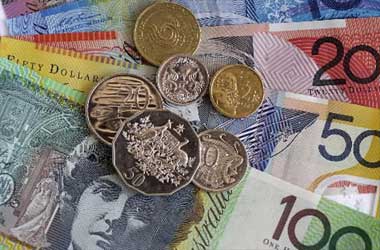 The dollar index declined to 96.60 against a bouquet of currencies Friday, recording a 0.6% slump is a single week, the biggest percentage decline in a month.
The dollar index declined to 96.60 against a bouquet of currencies Friday, recording a 0.6% slump is a single week, the biggest percentage decline in a month.
Anticipations of a likely Covid-19 drug negated worries about the rise in coronavirus infections in the US and across the globe.
Gilead Sciences Inc stated that its antiviral remdesivir minimized the risk of fatality by 62% and bettered the health of critically sick Covid-19 patients.
Notably, the yield on the benchmark 10-year US Treasury note increased 2.8 bps to 0.633%, having hit 0.569% earlier that day, the lowest level as far back as April 22nd.
Overall positive sentiment caused due to antiviral drug to cure Covid-19 negated concerns about a surge in Covid-19 throughout the US.
The two year Treasury yield, which most often twitches along the path of interest rate anticipations, nudged upwards to 0.155%, while the five-year yield increased 2.4bps to 0.298%.
For the week ended July 10, the 10-year yield decreased by 5 basis points.
Producer prices for final demand dropped 0.2% m-o-m in June, following a 0.4% rise in May and compared with economists expectation for a 0.4% increase.
Prices of services declined 0.3%, the largest drop since February, primarily led by 1.8% decline in margins for final demand trade services, namely equipment and vehicle wholesaling.
Cost of goods increased 0.2%, primarily driven by a 7.7% surge in energy, namely gasoline. On y-o-y basis, producer prices fell 0.8%, on par with May and compared to predictions for a 0.2% decline.
Barring volatile goods such as food and energy, core index decreased 0.3% m-o-m, following a 0.1% decline in the earlier month and missing economists’ anticipations of a 0.1% rise.
The yearly rate declined to 0.1% in June from 0.3% in the earlier month.
Elsewhere in Russia, current account surplus narrowed abruptly to $0.60 billion in 2Q20, from $9.90 billion in the corresponding period last year, as per preliminary data.
The goods surplus contracted to $14.30 billion from $39.40 billion in the prior year and the secondary income deficit widened to $1.30 billion from $0.90 billion.
In the meanwhile, the services disparity decreased to $2.10 billion from $9 billion and the investment income deficit fell to $10.20 billion, from $19 billion.
Brent crude futures gained 2% higher to close at $43.20 per barrel, inching a weekly rise of roughly 1%, after Gilead stated that its medicine remdesivir increased recovery and minimized the risk of loss of lives in patients affected by Covid-19.
Furthermore, the International Energy Agency upwardly revised its 2020 oil demand outlook, while Baker Hughes announced that the US energy companies reduced the number of oil and natural gas rigs in operation to a fresh record low for the tenth successive week.
Supply side data from both the API and EIA showed that the US crude inventories increased unexpectedly last week. Likewise, WTI crude rose 2.4% to close at $40.60 per barrel.
In the commodity market, spot gold prices declined 0.3% to close at $1,798 per ounce Friday, as worries over rising Covid-19 infections and their effect on the worldwide economic recovery were negated by positive info from Gilead’s antiviral drug to cure coronavirus disease.
For the week ended July 10, the yellow metal rose 1.4%, reflecting the fifth consecutive weekly rise, after ascending to its peak since September 2011 at $1,818 last Wednesday.




